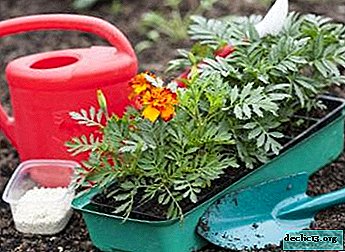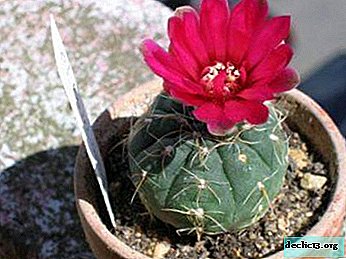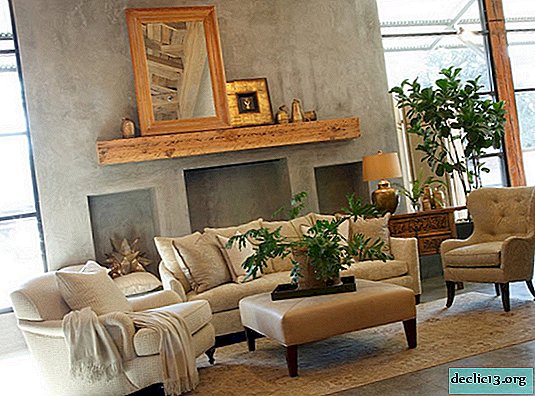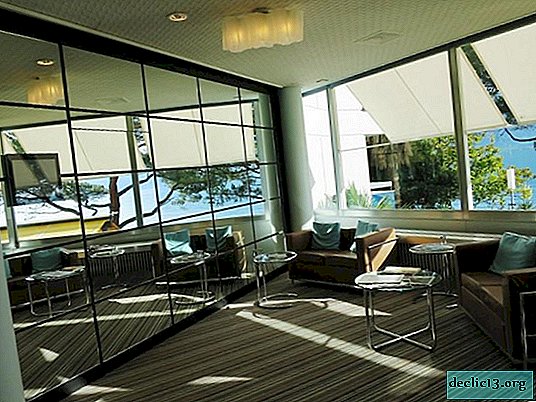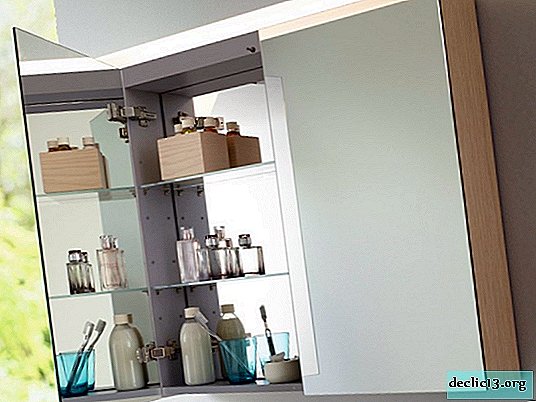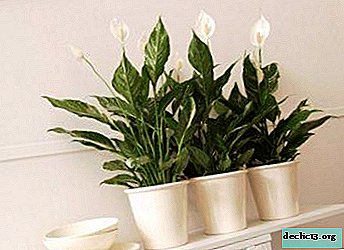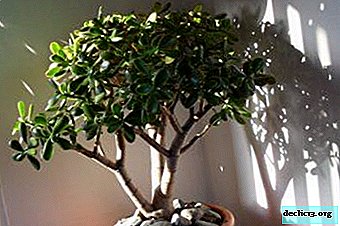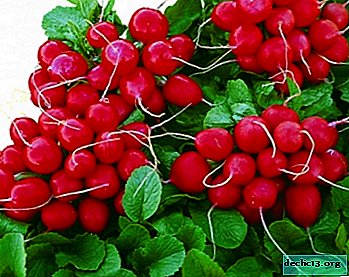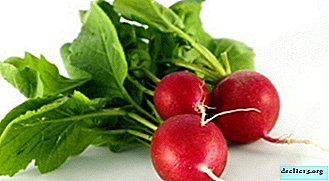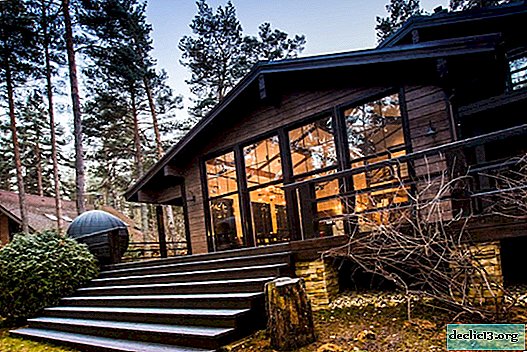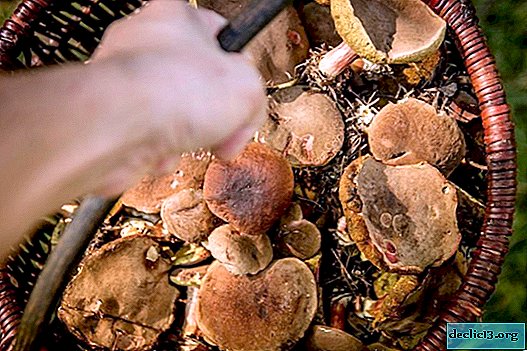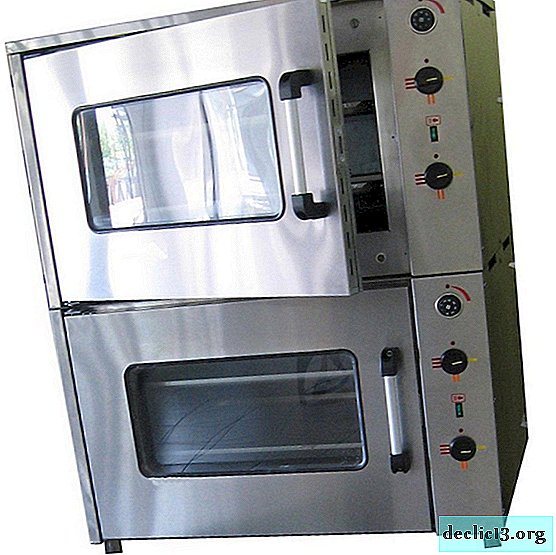Pelargonium Care Tips Pak Salmon Komtess
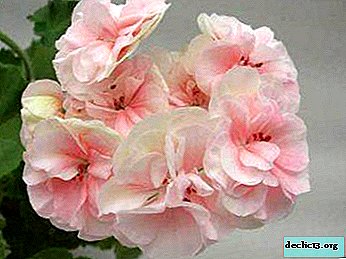
Pelargonium Pak Salmon Contess - this is not just one particular variety, but an entire branch, a separate family, which includes several dozen varieties of pelargonium.
Both rosaceous and ivy, zonal varieties are presented here. The latter are the majority.
All varieties of Pelargonium Pak are distinguished by their excellent appearance, relative unpretentiousness, many of them can be grown in the open air.
In the article, we will consider the features of Pak Salmon pelargonium, we will learn how to plant, grow and propagate them correctly.
Description
Pelargonium Pak (PAC) - a hybrid plant variety, characterized by excellent appearance and unique decorative qualities. Varieties are by far the most popular, which is not surprising: along with the stunning external effect of the pelargonium, Pak is also unpretentious in maintenance, grow well even among beginner growers.
On a note. The cost of the rooted cuttings of one of the varieties of Pak for today is about 500 rubles.This hybrid is not propagated by seeds at home, since often plants in this case do not inherit valuable parental qualities. Note that Pak pelargonium is a new word in floriculture, and varieties were created recently.
However, at the first exhibition, these plants immediately attracted all the attention to themselves, and immediately earned universal recognition and love. These varieties are intended for landscape gardening, therefore they are distinguished by an unpretentious "character", and are able to withstand quite severe external conditions.
Appearance
Varieties Pak have unique decorative qualities. The bushes of the plant are formed quite compact, stocky, strewn with lush inflorescences of large buds. One inflorescence usually includes about 10-15 flowers, and there can be several such inflorescences on a bush. Almost all varieties of Pak have double flowers, which gives plants even greater external effect.
Externally, the Pak Pelargonium bush resembles a bush rose of ancient tea varietieswhich is very popular with flower growers and landscape designers. The compact plant turns out to be quite powerful, but due to the spectacular flowers it looks elegant. In addition, Pak pelargonium also has beautiful foliage: with notches, a deep dark green hue. Flowers against the background of decorative leaves look very elegant.
Photo
Next you will see a photo of the pelargonium Pak Salmon Komtess.





Medicinal properties
Pelargonium Pak, like other types of pelargonium and geraniums, in addition to external decorative ones, also has healing properties. Main a useful feature of the plant is its ability to harmonize the microclimate indoors or in the area where it grows.
Reference. Pelargonium, due to its phytoncides, destroys harmful microbes in the air, making it more healing, clean and useful.Thus, the main property of this plant is antibacterial and antiviral. It is known that pelargonium can even cope with staphylococcus, which causes quite dangerous and serious diseases.
Landing
We will find out what are the requirements of Pelargonium Pak to its habitat: what kind of lighting this plant needs, soil composition, temperature and other points.
Location and Lighting
Pelargonium Pak needs a rather plentiful amount of light. But since these plants are intended for landscape gardening, problems with lighting should not arise. However, plants and houses are grown - in this case, it is recommended to place a flower pot on the south or southeast window sill: here the pelargonium will be provided with the necessary amount of sunlight for it.
If the apartment is dark and the windows face north, it is recommended to arrange additional artificial lighting for Pak pelargonium. With a lack of light, the plant loses its decorativeness, refuses to bloom, withers. But it is better to shade the plant from direct sunlight, as burns on the leaves are likely.
Temperature
 Pelargonium Pak feels best in conditions of moderate temperature conditions. In summer, the plant will develop safely and bloom at a temperature of + 17-23 degrees, while in winter a cooler temperature of + 13-15 degrees is needed. In winter, a plant, if it is outdoors in summer, it is necessary to bring it into the room, and plant it back under the open sky only when the threat of night frost has completely passed.
Pelargonium Pak feels best in conditions of moderate temperature conditions. In summer, the plant will develop safely and bloom at a temperature of + 17-23 degrees, while in winter a cooler temperature of + 13-15 degrees is needed. In winter, a plant, if it is outdoors in summer, it is necessary to bring it into the room, and plant it back under the open sky only when the threat of night frost has completely passed.
Note that too low temperatures negatively affect the flowering of pelargonium, so it is extremely undesirable to allow the plant to be in the cold.
Soil composition
Pelargonium Pak will grow well in loose soil. You can buy ready-made soil for geraniums in the store, or you can do it yourself. In the latter case, the composition requires the following:
- sheet land - 3 parts;
- coarse river sand - 1 part;
- charcoal - 1 part;
- peat substrate - 1 part.
Care Features
We learn how to care for Pelargonium Pak so that it grows well and pleases the eye with lush flowering.
Watering
For successful growth and flowering, a plant needs regular watering, but without waterlogging. It is recommended to moisten the soil only when the top layer of the substrate is already dry. After flowering in autumn, the frequency and abundance of watering is lowered so that the plant stops its rapid growth and prepares for hibernation.
Top dressing
Frequent top dressing is not needed for this plant. It is important only to feed pelargonium with nitrogenous compounds in spring to form a plentiful green mass, and before flowering, add potassium and phosphorus for a more plentiful formation of inflorescences. It is advisable to introduce additional nutrition in liquid form along with
Important! In winter, the plant is not fed, since during this period pelargonium rests and recovers, and prepares for the next growing season.If you propagate a plant, then after rooting the cuttings, it is very important to feed them with nitrogen compounds so that young pelargoniums gain green mass faster.
Pruning
Since this type of pelargonium is growing quite rapidly, the formation of a bush in this case is necessary. If pruning is not done in time, the inflorescences will become smaller, and the bush will lose most of its decorativeness. Old shoots that have outlived their own need to be removed regularly, and it is also necessary to pinch young shoots so that more active lateral branching occurs.
Wintering
 Pelargonium Pak is best not to winter in a warm room, but on a glazed veranda, loggia or in a greenhouse. At night, the temperature in this room should be approximately +6 degrees, in the daytime rise to + 12-15 degrees. This is the optimal temperature for a safe wintering of the flower.
Pelargonium Pak is best not to winter in a warm room, but on a glazed veranda, loggia or in a greenhouse. At night, the temperature in this room should be approximately +6 degrees, in the daytime rise to + 12-15 degrees. This is the optimal temperature for a safe wintering of the flower.
Note that if the pelargonium variety is bicolor or tricolor, then it is better to keep the flower in a warmer room, since these varieties are more tender. Do not put pots with plants too closely, since such thickening in conditions of rather low temperatures and high humidity is fraught with the spread of fungal diseases, rot. Pelargonium Pak should be watered in winter extremely poorly, and only if the top layer of the substrate is fairly dry.
Disease
Pelargonium Pak, like other species of these plants, is also prone to diseases and damage by harmful insects. Of the diseases, the most dangerous for the flower is rot: root, stem, gray. These fungal diseases occur most often due to poor-quality care: waterlogging of the soil, air, too dense plantings, lack of light, heat.
Root rot is not treated, and all other species can be treated with systemic fungicides. The main thing is not to start the problem, but to take measures immediately when the first alarming symptoms appear.
Of the pests, the following varieties pose the greatest danger to Pelargonium Pak:
- aphid;
- spider mite;
- whitefly.
To prevent pest damage, A pelargonium bush should be inspected regularly for larvae and eggs. And if pests have already managed to infect the plant, systemic insecticides will help get rid of parasites.
Breeding
Pelargonium Pak propagates at home by the cuttings. This option is simpler, and its result is much more predictable: the plant just turns out exactly the same as the mother. In the case of seed propagation, the result sometimes happens not what was expected, since the resulting plant often does not inherit parental qualities. Let us consider in more detail reproduction using cuttings.
The algorithm is as follows:
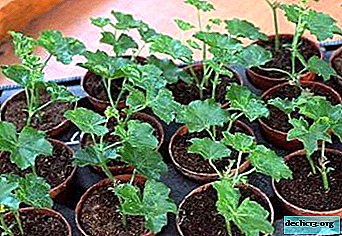 an apical shoot up to 7 cm long is cut from the mother plant;
an apical shoot up to 7 cm long is cut from the mother plant;- within eight to ten hours, the shoot is dried, wrapped in paper;
- after drying, the stalk is rooted in a glass with prepared soil;
It is possible at first to grow roots in the water, however, this method does not affect the final result. In addition, the stem often rots in the water of the plant, so it is still undesirable to use the aqueous method. After 10-20 days, the shoot takes root in the soil. To make rooting faster, place a glass with a plant on a well-lit window sill and water regularly.
Conclusion
We met one of the most decorative and refined varieties of pelargonium - the Pak family. As you can see, these plants, despite their external beauty, are completely unpretentious, and can be grown, including on the street. With a little effort and taking proper care of pelargonium, you can enjoy its beautiful decorative flowering for a long time.

 an apical shoot up to 7 cm long is cut from the mother plant;
an apical shoot up to 7 cm long is cut from the mother plant;